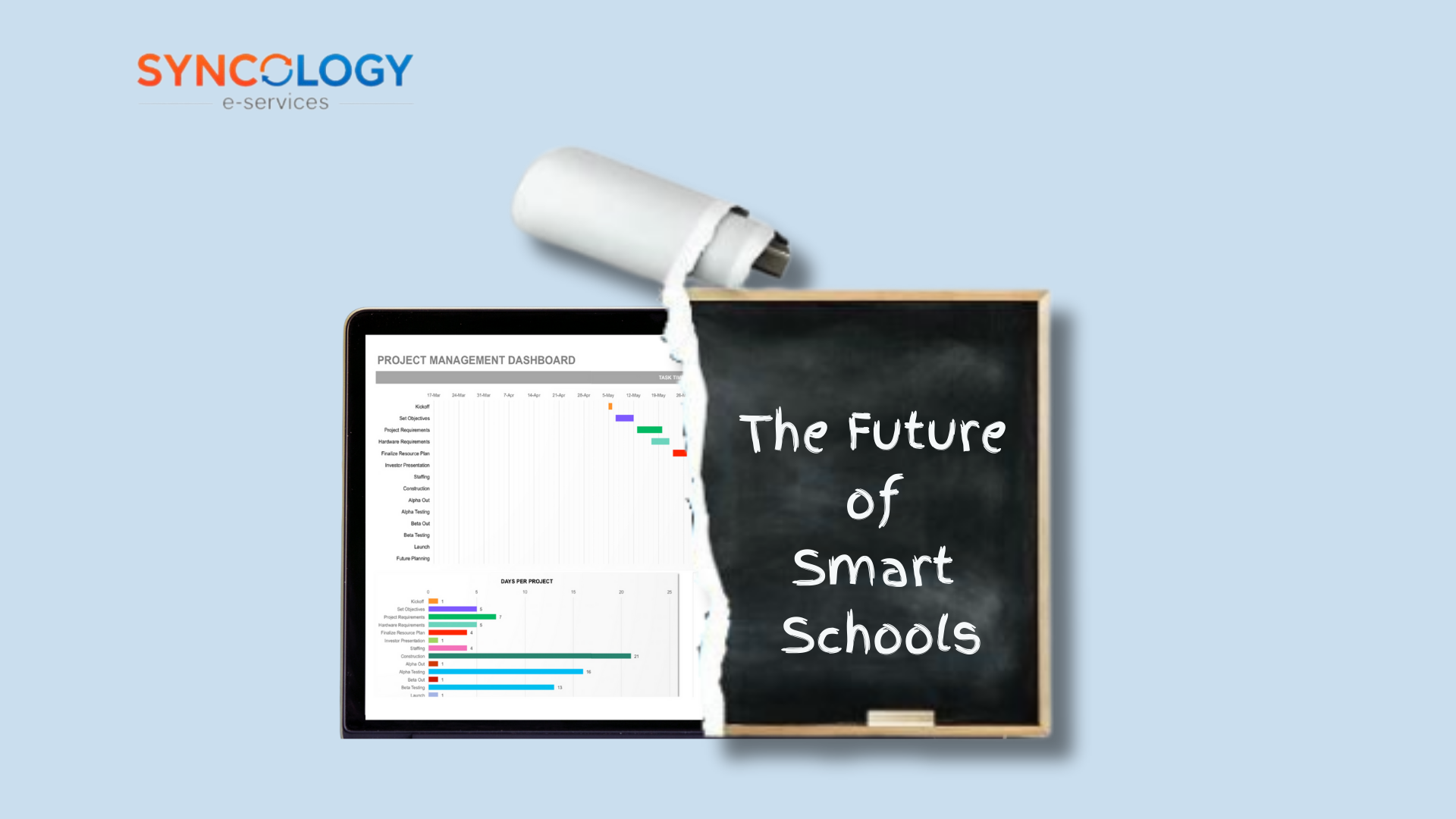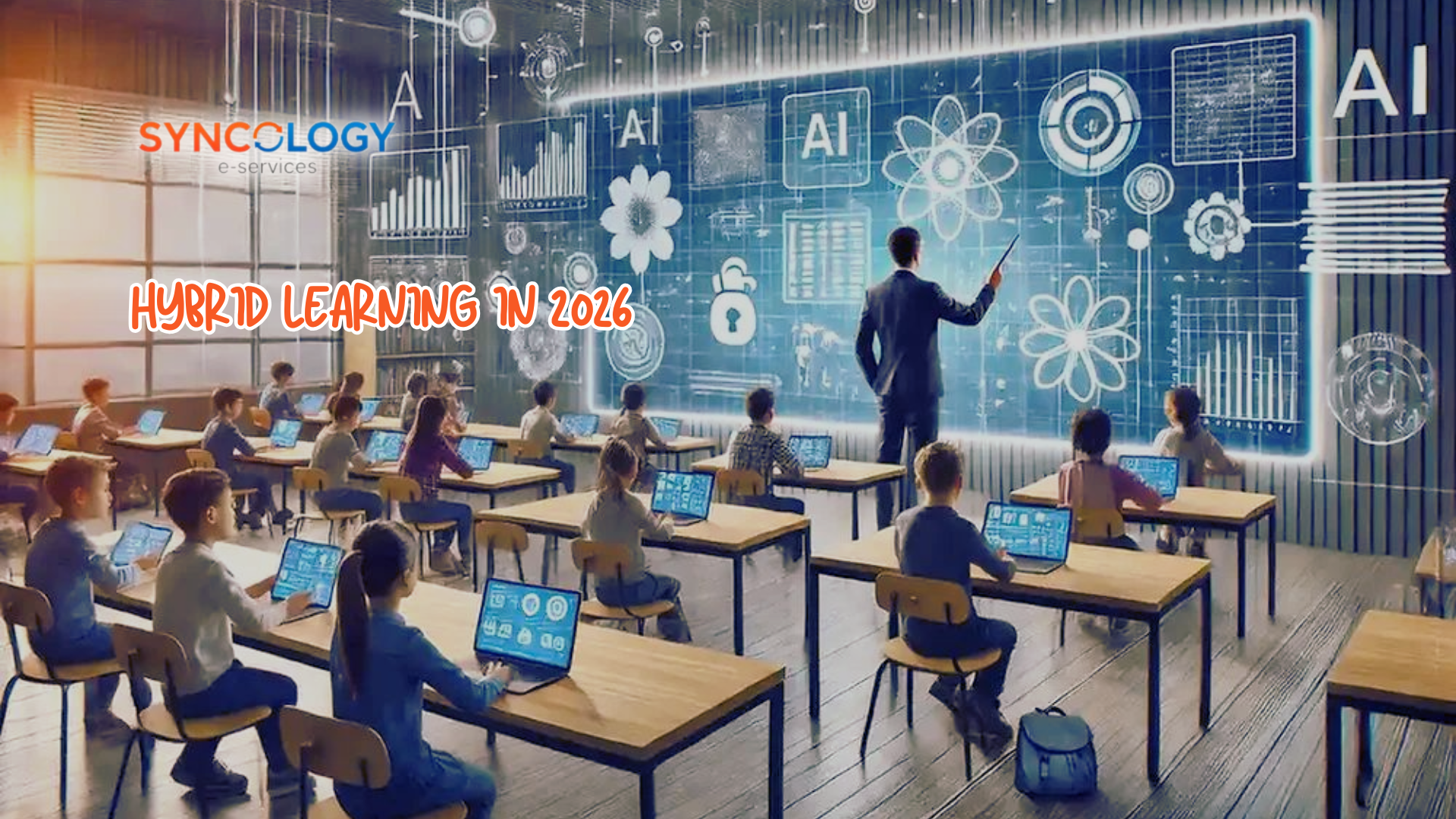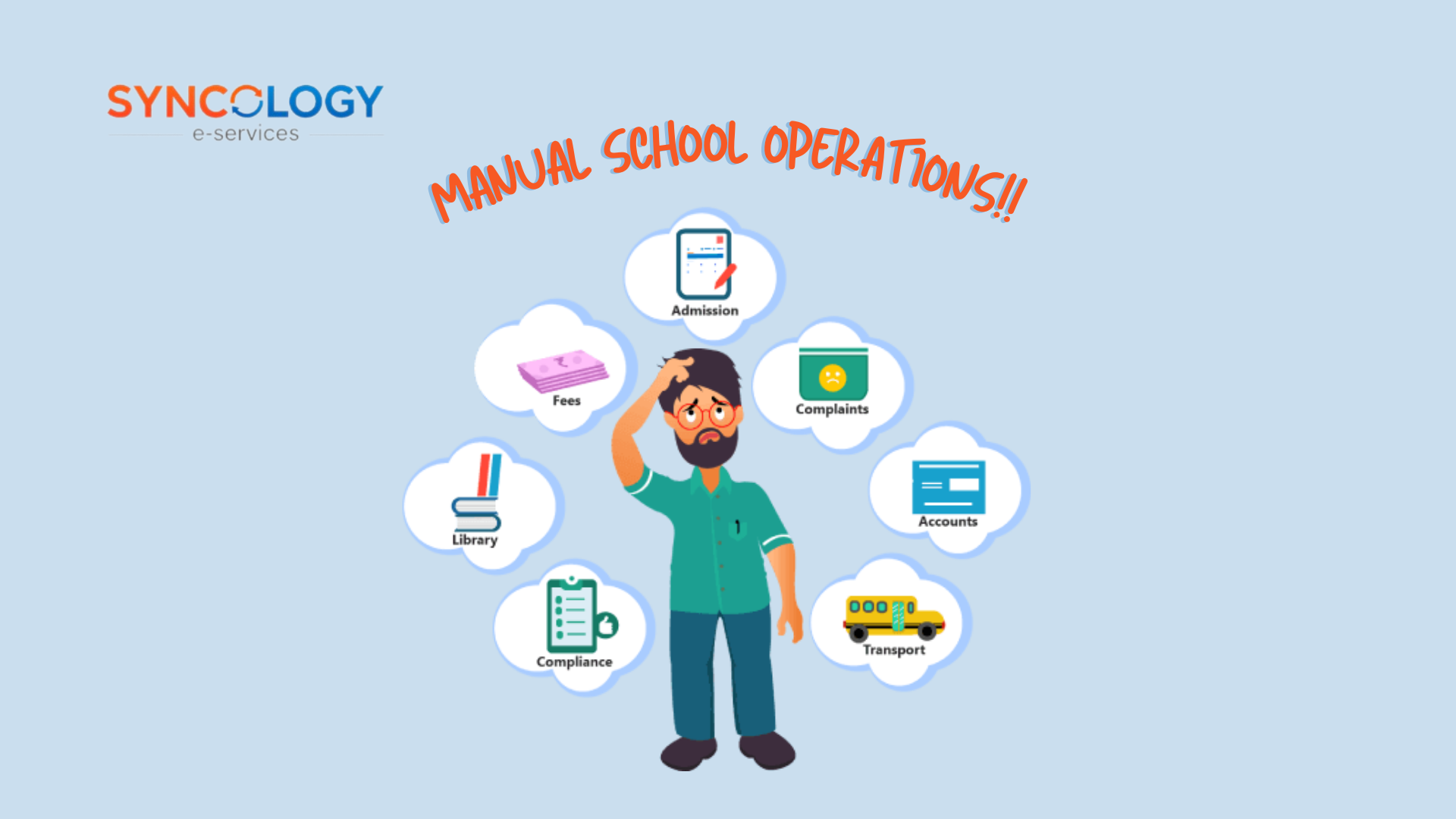
The Future of Smart Schools
Smart Schools are no longer just a futuristic vision!
Smart Schools are the new reality shaping modern education. By integrating advanced technologies like school ERP systems, learning management systems (LMS), artificial intelligence (AI), and cloud computing, schools are transforming into connected ecosystems where efficiency, creativity, and personalized learning thrive.
In this guide, we’ll explore what makes a school truly “smart,” the technologies behind it, the benefits and challenges, and how to prepare your institution for the future of education.
Table Of Contents
- What Makes a School ‘Smart’?
- Core Technologies Powering Smart Schools
- Key Benefits of Smart Schools
- Challenges Schools Face in Becoming Smart
- How to Prepare Your School for the Future
- About Syncology: Your Partner in Building Smart Schools
- Conclusion
What Makes a School ‘Smart’?
A smart school is not just about digital tools—it’s about building a connected ecosystem that enhances learning, administration, and overall student experience. Smart schools use integrated technologies to streamline management processes, create engaging classrooms, and ensure seamless communication between teachers, students, and parents. With a blend of advanced software systems and strong hardware infrastructure, these schools create an environment that is efficient, adaptable, and future-ready.
Core Technologies Powering Smart Schools:
Several technologies form the backbone of smart schools:
-
School ERP Systems: These unify academic, financial, HR, and administrative processes in one platform.
-
Learning Management Systems (LMS): Providing teachers and students with centralized access to assignments, digital content, and assessments.
-
Cloud Computing: Offering scalability, flexibility, and secure access to data anytime, anywhere.
-
Artificial Intelligence (AI): Enabling personalized learning experiences, predictive analytics, and automated administrative tasks.
-
Augmented Reality (AR): Bringing immersive and interactive content into classrooms.
-
Hardware Infrastructure: From reliable internet networks, smart boards, and tablets to secure servers and surveillance systems, hardware forms the foundation for all digital solutions.
Key Benefits of Smart Schools:
Adopting smart school systems delivers wide-ranging benefits:
-
Boosted Academic Performance and Reputation
Smart technologies give students access to personalized, engaging, and data-driven learning experiences. This directly improves academic outcomes and positions your school as a leader in education excellence.
-
Operational Efficiency and Cost Savings
Smart schools reduce administrative burdens and eliminate inefficiencies. This means lower operational costs, fewer errors, and more resources directed toward growth and innovation.
-
Enhanced Parent and Student Satisfaction
Real-time communication tools, online portals, and transparent performance tracking give parents confidence and keep students motivated.
-
Future-Proofing Against Competition
By modernizing infrastructure and adopting advanced ERP systems, your institution shows it is ready for the future—attracting more enrollments and staying ahead of other schools that lag behind.
-
Better Decision-Making Through Data
Smart schools leverage advanced analytics to make strategic decisions backed by real-time insights. Data turns challenges into opportunities for growth.
-
Scalability and Long-Term Sustainability
As education evolves, your school must adapt. Smart infrastructure and ERP systems provide the flexibility to scale, ensuring your investment continues to deliver returns for years to come.
Challenges Schools Face in Becoming Smart
While the advantages are clear, the journey has its challenges:
-
Initial Investment: Setting up hardware infrastructure and ERP systems requires upfront costs.
-
Digital Divide: Not all students may have equal access to devices or internet connectivity.
-
Training Needs: Teachers and staff must adapt to new technologies with proper training.
-
Data Security: Protecting sensitive student and financial data is critical.
-
Resistance to Change: Some stakeholders may be hesitant to shift from traditional methods.
How to Prepare Your School for the Future?
Schools can prepare for the future by:
-
Investing in Infrastructure: Secure, scalable, and reliable hardware is the foundation for digital transformation.
-
Choosing the Right ERP & LMS: Select solutions that integrate seamlessly, reducing silos and improving efficiency.
-
Building Staff Capabilities: Offer regular training programs to help teachers embrace technology.
-
Adopting Phased Implementation: Start with core processes, then expand to more advanced tools like AI and AR.
-
Prioritizing Security: Implement strong cybersecurity measures to protect sensitive information.
About Syncology: Your Partner in Building Smart Schools
At Syncology, we understand that building a smart school requires more than just software. Our ERP and LMS solutions are designed to integrate seamlessly with your school’s hardware infrastructure, from networks and devices to security systems. By combining robust infrastructure with intelligent software, Syncology ensures your school operates smoothly, adapts quickly, and delivers an exceptional learning experience. Whether it’s managing attendance, automating payroll, or enhancing classroom engagement, Syncology helps schools unlock their full potential.
Conclusion…
The future of education lies in smart schools that leverage technology to improve efficiency, transparency, and student outcomes. From ERP systems and AI-driven learning tools to strong hardware foundations, these schools are redefining how education is delivered. While challenges exist, with the right strategy and partner, schools can overcome them and embrace a smarter, more connected future.
Discover how Syncology can help you build a truly smart school with the perfect balance of hardware and software solutions.
Contact us today and take the first step toward smarter education.





